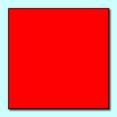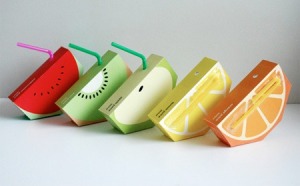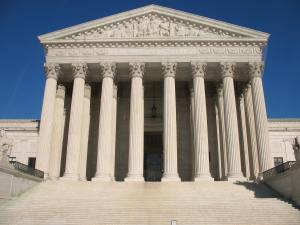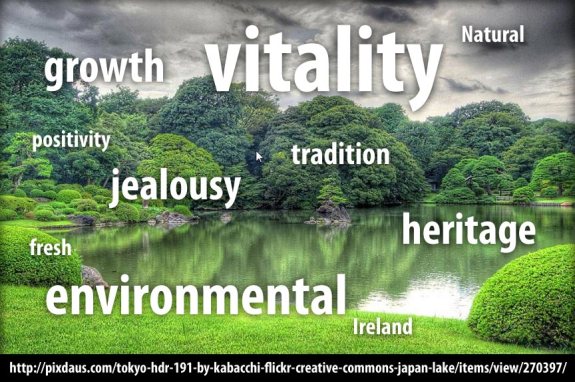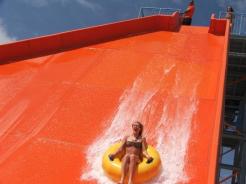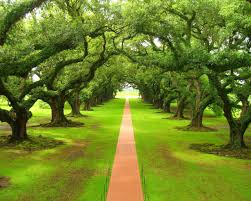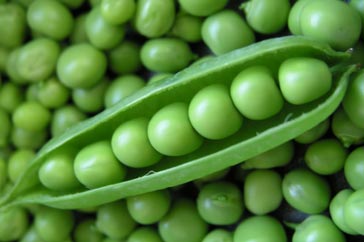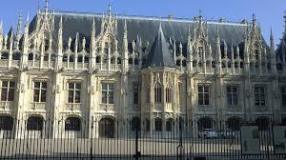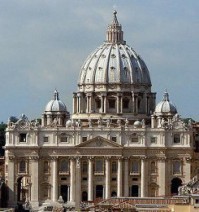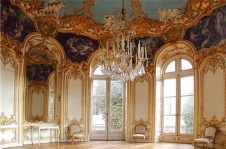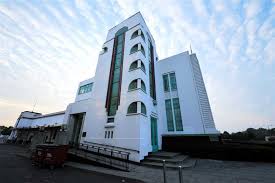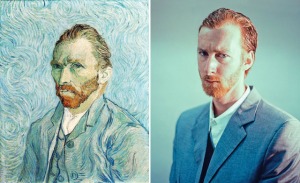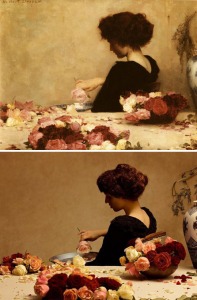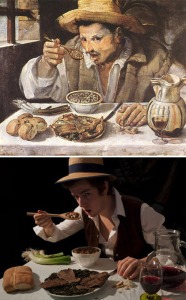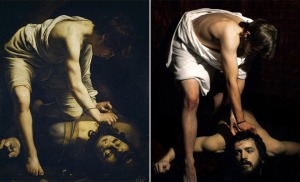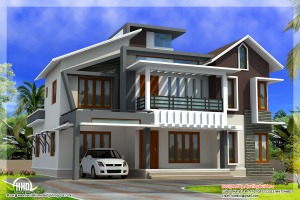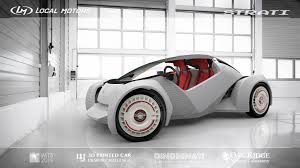Visual Communication
Shapes – how shapes convey meaning
Square:
– Boring
– Reliable
– Solid
Triangle:
– Strong
– Structure
– Hierarchy
– Construction
Upside Down Triangle:
-Unstable
-No balance
-Unsafe
-liability
Packaging Covey The Product –
I found these on the internet when typing in packaging, this is one example of how packaging can convey the product this is one creative packaging that i found because it used colours and the design to create the fruit drink you are drinking and they have even gone to make the shape that you cut when eating these fruits. The colours imagery and shapes all work with this but with out the shape of these cartons it would be just an average packaging.

This is another image i have found which shows a shoe bag which is a rectangle shape which also has the image of a shoe with holes so that the laces can go through to make it look realistic, creative, fun and personal to them.
shapes – buildings
This is the US supreme court the way this building has been made has got lots of decrotive old designs which shows money and power. Also they have used pillars which also show power and authority. They are used to hold the building up which are strong, powerful and these are the things that a court need to show.
Cars – shapes
The way a car is shaped to look more appealing to the eye makes you want to buy it and the way a shape can look cool and make you think that having this car will make you look better or get further in life. These are some things the shape of a car can make and the way that adverts tell you what this car can do for you in many ways.
How colours convey meaning –
Red:
– Bad
– blood
– Danger
– Seduction
Blue:
– Sky
– Peaceful
– Tranquility
– Clear
– Happy
Green:
– Life
– Plants
– Environment
– Vegetables
Black:
– Space
– Dark
– Scary
– Alone
Yellow:
– Sun
– Bright
– Colourful
These two pictures show how different colours can change a place or picture from a scary untrustworthy place to a tranquil and calm place.
I found this image which shows a few words which convey the meaning of this picture, if this was at night the words would probably be different because the colours wouldnt be bright and this would look black dark and scary rather than peaceful.
RED
Red is the most eye-catching and exciting color in the entire spectrum. It’s eye-catching, exciting, and demands attention. but if you overuse this colour it can cause a negative emotional response. These images i have chosen because they show so much red that it has become negative and if thats what they have tried to do it has worked because a large percentage of the images are red which communicates death, evil, upset, ext.
Blue
Blue is the colour of trust and loyalty. Blue is associated with calmness and security. Most people would say that blue is their favorite color. It has been documented to lower heart-rate, foster relaxation, and increase productivity. This is a very safe colour to incorporate into your design. Since it’s most people’s favourite colour, you’ll immediately appeal to a wider audience.
Orange
Orange is an attention getter. Distinct from red, orange is a color that is mostly associated with fun, ambition, and youthfulness. It is also a great colour to use for accents and calls to action. Unlike red, it is not as easily overused.
Yellow
Yellow is the official color of optimism and happiness. That’s why smiley faces are always this color. Studies have shown that the color yellow actually causes the release of serotonin in the brain, which is a chemical that positively stimulates your brain. This colour is also best used in small amounts. Too much yellow can be overpowering and shouldn’t be used as a dominant colour in a scheme.
Green
Green is the easiest color for the human eye to process. It’s easy to look at and is associated with growth, nature, and money. It can also be a very relaxing color for some, which is why you’ll see it used in a lot of leisure.
Semiotics – Signs
– Subgroups
– Demographics
– Marketing
– Stereotypes
Marketing – cars
Both of these cars are on average similar priced but they both stereotypically have two different owners, for example the land rover would be seen as some one who uses it for work, or some one with dogs. Where as the range rover would be seen as some one with lots of money, someone important also the car shows someone aggressive.
Stereotypes
Front garden messy:
students, some one who doesn’t care, younger people
Front garden tidy and clean:
Older people, people who take pride in the appearance of their home.
These stereotypes help us figure out what people want, enjoy and their interests. Brands our set up for different groups of people, and before this is done they have to know there audience for example posh people, before creating a brand you would need to know what they want, what they like, the colours used.
TV chanels and films
Mens Motors is stereotypical for men, this doesn’t mean that only men and all men should or do watch this but it does mean that it was set up to target more men than women as is romantic films are set up to be a target to more women than men. This shows that it isn’t a bad thing to say that one is more for men than women or women than men because its set up to a target audience. Cash in the Attic target audience would be old men and women this is because of the age and how the stuff in the attic will be things from maybe when they or there parents where born so this suits them and is a good target audience.
Stereotype Groups
Chavs – Caps
Goths – Dark clothes – heavy music
Posh People – expensive coffee – magazines
Skaters – skate board – long hair
Business men – suits – gagets
Students – alcohol – tv, fb
Saying these things are thought to be bad but with out these stereotypes how would clothing brands, cars, products, food be able to create a target market, without these stereotypes there wouldn’t be things you want out there to buy.
How buildings communicate – intro to period style
Classic: Greece
For there buildings they used pillars to keep the building strong and the roof up. There were three different types one was doric, the second was ionic and the third corinthian. Classical architecture is derived from the architecture of ancient Greece and ancient Rome. With the collapse of the western part of the roman empire, the architectural traditions of the Roman empire ceased to be practised in large parts of western Europe. In the Byzantine Empire, the ancient ways of building lived on but relatively soon developed into a distinct Byzantine style.
Romanesque:
They added domes on to buidlings which looked the same as classic greek buildings which have been used on places like the sheffield city hall and the white house. Romanesque architecture is an architectural style of medieval Europe characterized by rounded arches. There is no consensus for the beginning date of the Romanesque architecture, with proposals ranging from the 6th to the 10th century. It developed in the 12th century into the Gothic style, marked by pointed arches. Examples of Romanesque architecture can be found across the continent, making it the first pan-European architectural style since Imperial Roman Architecture. The Romanesque style in England is traditionally referred to as Norman architecture.
Gothic: (Christian faith)
Gothic was actually a bright and decorative movement which is used in a lot of churches and the buildings are a lot about structure. they used materials across from the land to the building so that the buildings would stay stood up straight and they usually used glass so the light shining through would be a glimpse of heaven. Gothic architecture is a style of architecture used in Western Europe in the Middle Ages. It began in France in the 12th century. The Gothic style grew out of Romanesque architecture. It lasted until the 16th century. By that time the Renaissance style of architecture had become popular.
Baroque: (Cristian power)
They copied roman buildings but made fancy and over the top copies using gold and white colours. Baroque architecture is the building style of the Baroque era, begun in late 16th-century Italy, that took the Roman vocabulary of Renaissance architecture and used it in a new rhetorical and theatrical fashion, often to express the triumph of the Catholic Church and the absolutist state. It was characterized by new explorations of form, light and shadow, and dramatic intensity.
Rococco
Rococco buildings where fun and looked like a palace and is used in theatres they mostly use sculptured angels using fake marble. Rococo architects applied Baroque ideas with a lighter, more graceful touch. In French, the word rocaille refers to rocks, shells, and the shell-shaped ornaments used on fountains. During the 1700s, a highly ornamental style of art, furniture, and interior design became popular in France. Called Rococo, the lavish style combined the delicacy of French rocaille with Italian barocco, or Baroque, details.
Neo Classic


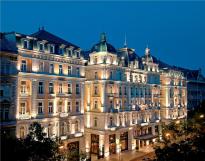
They used the organisation from the romanesque. Neoclassical architecture is an architectural style produced by the neoclassical movement that began in the mid-18th century. In its purest form it is a style principally derived from the architecture of Classical antiquity, the Vitruvian principles and the architecture of the Italian architect Andrea Palladio. In form, Neoclassical architecture emphasizes the wall rather than chiaroscuro and maintains separate identities to each of its parts. The style is manifested both in its details as a reaction against the Rococo style of naturalistic ornament, and in its architectural formulae as an outgrowth of some classicising features of Late Baroque. Neoclassical architecture is still designed today, but may be labelled New Classical Architecture for contemporary buildings.
Art nouveau
These were organic and was all about growth in 1900. Art Nouveau or Jugendstil is an international philosophy and style of art, architecture and applied art – especially the decorative arts – that was most popular during 1890 — 1910. English uses the French name Art nouveau (“new art”), but the style has many different names in other countries. A reaction to academic art of the 19th century, it was inspired by natural forms and structures, not only in flowers and plants, but also in curved lines. Architects tried to harmonize with the natural environment.
Art deco
Machine aesthetic which they created the Chrysler building in New York city.
Popular culture
Semiotics
Semiotics is the study of sign systems. It explores how words and other signs make meaning. In semiotics, asign is anything that stands in for something other than itself. This lesson focuses primarily on linguistic signs.
The word ‘semiotics’ dates back to ancient Greece, but its use in modern linguistics was propelled in the 19th century with the research of Ferdinand de Saussure. Saussure was a Swiss linguist who contributed greatly to the study of semiotics, also sometimes referred to as semiology.
Because people have developed the ability to assign meaning with words, we are able to describe abstract meanings. That means we have words for things that we may not be able to actually see in front of us. Furthermore, the history of a word may not directly influence what it means to someone. As an example, we can use the word ‘cool’ without any thought or reference to temperature. The usage is separate from its history.Scholars of modern linguistics understand that words do not have innate meanings. That is, when we say the word ‘rabbit’, it is not because those sounds or letter symbols have anything to do with the qualities of a small, furry herbivore. In fact, the word, sounds, and letters are all unrelated to the creature we call rabbit, except that humans have assigned a value to them.
For Saussure, language itself makes meaning rather than simply conveying meaning. Therefore, our experience is influenced by the language we use to describe it. This meaning-making is why the theories of Saussure have become important to literary theory. When we understand that language is a sign system and not just a naming of objects, we read and discuss literary works differently. We are able to analyze the various meanings embedded in a text and how one text influences another.
Photography and paintings
“Self Portrait 1889″, Vincent van Gogh – remake by Seth Johnson
“La bonne foi”, Magritte – remake by Noemi Mazzucchelli
“Pot Pourri”, Herbert James Draper – remake by Tania Brassesco and Lazlo Passi Norberto
“Portrait of Sylvia Von Harden”, Wilhelm Heinrich Otto Dix – remake by Stephan Hoffman & SoYeon Kim
“The Beaneater”, Annibale Carracci – remake by Mark Bass
“Girl reading a letter by an open window”, Vermeer – remake by Wanda Martin
“Le Désespéré”, Gustave Courbet – remake by Stefano Telloni
“The Two Fridas”, Frida Kahlo – remake by Claire Ball
“Girl with Ice Cream Cone”, Wayne Thiebaud – remake by Stephanie Gonot
“Self portrait dedicated to Dr. Eloesser”, Frida Kahlo – remake by Yesenia Caloca
“Boy with a basket of fruit”, Caravaggio – remake by Guido Ricci
“David and Goliath”, Caravaggio – remake by Miguel Iturbe
This is my favourite because this doesn’t just show the picture and a painting but it shows it in a different time which incorporates the past and the present.
Contemporary Design
Christopher Dresser (4 July 1834 in Glasgow – 24 November 1904 in Mulhouse) was a designer and design theorist, now widely known as one of the first and most important, independent, designers and was a pivotal figure in the Aesthetic Movement, and a major contributor to the allied Anglo-Japanese or Modern English style; both originated in England and had long lasting international influence.
Dresser was born in Glasgow, Scotland of a Yorkshire family. At age 13, he began attending the Government School of Design, Somerset House, London. He received training in design and took botany as his specialization. He lectured on the new subject of Art Botany to complete his studies before his appointment in 1855 as Professor of Artistic Botany in the Department of Science and Art, South Kensington. He wrote a series of articles that appeared in the Art Journal in 1857, “Botany as Adapted to the Arts and Art Manufactures.” In 1858 he sold his first designs.
In 1850 the University of Jena, Germany where Schleiden held the chair, granted a conventional doctorate to Dresser on his submission of his books Rudiments of Botany (1859) and Unity in Variety(1859) and a short paper on plant structure; as Dresser did not attend the University his doctorate was awarded in absentia.
From this early date his design work widened to include carpets, ceramics, furniture, glass, graphics, metalwork, including silver and electroplate, and textiles printed and woven. He claimed to have designed ‘as much as any man’ at the International Exhibition London 1862. As early as 1865 the Building News reported that in the early part of his career he had been active as a designer of wallpapers, textiles and carpets thus the most active revolutioniser in the decorative art of the day. He wrote several books on design and ornament, including The Art of Decorative Design (1862), The Development of Ornamental Art in the International Exhibition (1862), and Principles of Design (1873) which was addressed in the preface to ‘working men’. In 1899 The Studio magazine found it was possible to quote this book ‘page after page and not find a line, scarcely a word, that would not be endorsed by the most critical member of the Arts and Crafts Association today.’ In effect Dresser set the agenda adopted by the Arts and Crafts movement at a later date. In 1873 he was requested by the American Government to write a report on the design of household goods.
En route for Japan in 1876 he delivered a series of three lectures in the Philadelphia Museum and School of Industrial Art and supervised the manufacture of wallpapers to his design for Wilson Fennimore. He was commissioned by Messrs Tiffany of New York to form a collection, whilst in Japan, of art objects both old and new that should illustrate the manufactures of that country.
In four months in 1876/1877 Dresser travelled about 2000 miles in Japan, recording his impressions in Japan, its Architecture, Art and Art-Manufactures. He represented the South Kensington Museum whilst in Japan, and was received at court by the Emperor, who ordered Dresser to be treated as a guest of the nation – all doors were open to him. He was requested by the Japanese Government to write a report on ‘Trade with Europe’. His pioneering study of Japanese art is evident in much of his work which is considered typical of the Anglo-Japanese style.
From 1879 to 1882 Dresser was in partnership with Charles Holme (1848–1923) as Dresser & Holme, wholesale importers of Oriental goods, with a warehouse at 7 Farringdon Road, London, next door to those of the American inventor and abolitionist, Thaddeus Hyatt (1816 – 1901).
Between 1879 and 1882, as Art Superintendent at the Linthorpe Art Pottery in Linthorpe in Middlesbrough he designed over 1,000 pots. If his ceramic work from the 1860s onwards (for firms such as Mintons, Wedgwood, Royal Worcester, Watcombe, Linthorpe, Old Hall at Hanley and Ault) is considered, he must be amongst the most influential ceramic designers of any period. Much of his other work remains to be identified, although wallpaper designs for American, and textiles for French and German manufacturers have recently been located. A significant Dresser collection is held by the Dorman Museum in Middlesbrough. A Heritage Lottery Fund funded project draws attention to this.
Some of Dresser’s metalwork designs are still in production, such as his oil and vinegar sets and toast rack designs, now manufactured by Alessi and Alberto Alessi goes so far as to say Dresser ‘knew the techniques of metal production better than any designer who has come to Alessi’. One of his Old Hall designs is thought to have inspired Alan Garner’s 1967 novel The Owl Service.
Royal college of art
The Royal College of Art (informally the RCA) is a public research university specializing in art and design located in London, United Kingdom. It is the world’s only wholly postgraduate art and design institution offering Master of Arts (M.A.), Master of Philosophy (M.Phil.) and Doctor of Philosophy (Ph.D.). It was founded in 1837 as the Government School of Design. The Royal College of Art is widely considered to be the world’s most influential art and design institution.
The RCA was founded in 1837 as the Government School of Design. In 1853, it became the National Art Training School with the Female School of Art in separate buildings; and, in 1896, it received the name Royal College of Art. During the 19th century, it was often referred to as the South Kensington Schools. See Richard Burchett, an early Headmaster, for more details on this period. After 130 years in operation, the Royal College of Art was granted its Royal Charter in 1967, which gave it the status of an independent university with the power to grant its own degrees.
Cutting edge houses
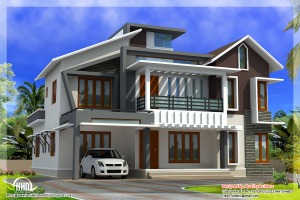
These cutting edge houses are being built around the world right now, some are just concepts of what they wish to look like and some have already started or finished being built. These are the images of the future designed buildings.
Modern residential architecture draws on a wide variety of influences, from the Prairie-style designs of Frank Lloyd Wright, to the mid-century modern homes characteristic of the International movement, to the A-frame and geometric house plans of recent decades. The unifying factors are a disregard for historical precedent and a general sense of minimalism. Many modern home designs also take advantage of advances in building technology and materials to create unique and innovative designs. Glass, concrete, vinyl and wood – often with an industrial look to them – emphasize the concept of progressive architecture. Abundant windows are characteristic of modern home designs, creating a connection to the outdoors. Contemporary house plans offer flexible space and flexible usage, allowing the homeowner to tailor the home’s functionality to their lifestyle. These home plans reward the adventurous owner with up-to-date functionality and design.
Contemporary Cars
Cars are being built in ways that don’t seem possible with there curvy body shapes which make them more attractive and more expensive. We now have different ways of creating cars through machinery and technology which we didn’t have a long time ago, this gives us the chance to experiment and create a great outcome.
4 Types of 3D printing
3D printing is an inexact moniker, but usually refers to object made using ink jet technology in three dimensions. As it’s name implies it is a close cousin to traditional 2D printing. These printers work by layering powder a powder substrate and binding it with pigmented glue. This is the only 3D printing technology capable of printing in full color. The major manufacturer of 3D printing equipment is ZCorp.
Fused Deposition Modelling
Fused Deposition Modelling creates models by heating and extruding a filament of plastic material. Stratasys commercialized this technology and owns the trademark. It is one of the cheaper forms of 3D printing with systems starting at £15,000.
Stereolithography
Stereolithography produces models by tracing a beam of UV light over a photosensitive pool of liquid. Over time the part is lowered into the bath and the final product is produced. The major benefit of this 3D printing technology is the high level of detail and surface finish it enables. Stereolithography technology also provides the most interesting product reveal. Once the part is done printing it is lifted elegantly out of the photopolymer solution. It is a dramatic finish compared to the dust off or breaking of supports other systems require. The Viper line of stereolithography apparatuses (SLA’s) manufactured by 3D Systems produce the highest quality 3D prints available.
Selective Laser Sintering
Selective Laser Sintering is the awesome union of 3D printing and Lasers. The process is similar to stereolithography replacing the UV light with a laser and a vat of liquid with a powdered base. The major benefit of SLS is the ability to produce parts in a variety of materials ranging from plastics to ceraminc to metals. In some case SLS technology can be used in lieu of more expensive tooling processes. The Sinterstation by 3D Systems is an example of this technology in practice.
Images of 3d printing
As you can see using 3d printing can not only create small products but can also make layers to create cars and even houses. 3d printing is set up to create things that are near impossible by normal machine or hand and also to do it in less time.
3d printing benefits
Customization
3D printing processes allow for mass customisation, the ability to personalize products according to individual needs and requirements. Even within the same build chamber, the nature of 3D printing means that numerous products can be manufactured at the same time according to the end-users requirements at no additional process cost.
Tool-less
For industrial manufacturing, one of the most cost-, time- and labour-intensive stages of the product development process is the production of the tools. For low to medium volume applications, industrial 3D printing — or additive manufacturing — can eliminate the need for tool production and, therefore, the costs, lead times and labour associated with it. This is an extremely attractive proposition, that an increasing number or manufacturers are taking advantage of. Furthermore, because of the complexity advantages stated above, products and components can be designed specifically to avoid assembly requirements with intricate geometry and complex features further eliminating the labour and costs associated with assembly processes.
Sustainable / environmentally friendly
3D printing is also emerging as an energy-efficient technology that can provide environmental efficiencies in terms of both the manufacturing process itself, utilising up to 90% of standard materials, and, therefore, creating less waste, but also throughout an additively manufactured product’s operating life, by way of lighter and stronger design that imposes a reduced carbon footprint compared with traditionally manufactured products. Furthermore, 3D printing is showing great promise in terms of fulfilling a local manufacturing model, whereby products are produced on demand in the place where they are needed — eliminating huge inventories and unsustainable logistics for shipping high volumes of products around the world.
Disadvantages
Fewer Manufacturing Jobs
As with all new technologies, manufacturing jobs will decrease. This disadvantage can and will have a large impact to the economies of third world countries, especially China, that depend on a large number of low skill jobs.
Limited Materials
Currently, 3D printers only manufacture products out of plastic, resin, certain metals, and ceramics. 3D printing of products in mixed materials and technology, such as circuit boards, are still under development.
Copyright
With 3D printing becoming more common, the printing of copyrighted products to create counterfeit items will become more common and nearly impossible to determine.
Dangerous Items
3D printers can create dangerous items, such as guns and knives, with very little or no oversight.
More Useless Stuff
One of the dangers of 3D printers is that they will be used to create more useless stuff that is bad for the environment and wallets. Fortunately, there are new methods of automatically recycling objects made by 3D printers that hold promise of better recycling in the future.
Size
Currently, 3D printers are limited with the size of the products that they can create. Ultimately, large items, such as houses and building, could be created using 3D printers.
Contextual Studies Year 2
What makes a good brand?
- audience knowledge
Good brands have a thorough understanding of their target market and their interests. Finding out their target market helps them know what they are going to sell and how they are going to sell it. This also helps them create a personal link with the customer and create brand loyalty.
Research Branding
Local firms
global brand
find companies in sheffield and rebrand them
Personal Statement
My passion lies within the art of contemporary design. Ive always been the one to want the newest technology and its always interested me in the way things work as with my designs I like to keep them up to date rather than traditional. Most of my work includes branding and advertising.
Project Proposal
Contemporary Design
Contemporary design is ever changing. It is of the moment. This means all cutting edge designs from visual software designs to cars or house designs and all contemporary design. The reason I enjoy cutting edge design is because I am passionate for new creative things, I’ve never been a traditional arts person. I wish to cover more areas of contemporary design rather than just the popular objects and visuals. I hope this will achieve me to widen my knowledge and also the people who read and see what I have researched.
I would like to research
- Newest materials
- Latest software
- Objects such as cars, buildings,architecture, sculptures (reflect on how there similarities and differences to historic designs)
- Cutting edge printing
Norman Foster says “Contemporary Architecture is not simply anti-vernacular but also architecture that can have a number of influences but still tries to be aspirational, visionary, risky and uses new materials in an innovative way. Contemporary Architects attempt to push at the boundaries of materials and technology, and, especially in recent decades, geometry. ‘Modern Architecture’ refers only to the architecture of the Modern Movement where ‘form follows function’ and the ‘house is a machine for living in’. But Modernism was such a significant movement, (and such a change in thinking at that time) and influenced all architects since, that it is not simply an architectural style like ‘Arts and Crafts’ or ‘High Tec’.”
This relates purely to Architecture but can be ranged to inform people about contemporary design as it explains the difference between modern design and its self. I picked this piece of text because i believe this is a good way to explain the creative side of contemporary design.
Key questions
- What is contemporary design?
- The difference between contemporary design and modern?
- How does it contribute to the design world?
- Is it popular ?
- What is included in contemporary design ?
What makes a good question?
I think a good question is something that can be answered in a way that people can learn or relate to the answer. It also can be a good way to get in to someones mind and educate them.
The methodology I am going yo use is to start of by writing the things I already know about contemporary design, then to research existing areas of the design. Then I would like to look at some in person which will lead me on to look at what I have learnt so I can evaluate the process that I shall have overcome.
ESSAY
What is contemporary Design?
- If you’ve been around the design scene for any time at all, you’ve no doubt heard the words “contemporary design” used often enough to describe architecture, furniture, Products and art and design.
- You’ll often hear the terms “contemporary” and “modern” from time to time, but they’re not exactly the same thing. Modern refers to a specific design movement that arose in the early 20th century and contemporary is ever changing.
- Contemporary design celebrates what isn’t there as much as what is. Empty space creates a simple design.
- Contemporary design refers to what is popular or used right now. Contemporary design can be very diverse for that reason, because it is ever changing and borrows pieces and styles from all different eras. It doesn’t have to be something that is “designed” right now – for example; furniture and art from the modern era are often used in contemporary design
- The museum of modern arts defines contemporary design as beautiful, efficient, innovative and reflective of its time.This style looks in to the economy and environmental concerns as well as durability and technology.
- Contemporary design is ever changing. It is of the moment.
The difference between contemporary design and modernism?
- Modern and Contemporary in interior design are not the same, as many people might think. Modern design refers to a period of time, it is a design style that was created in the 1920′s – 1950′s. It doesn’t change, it is a defined style, and will remain a period style.
- The term Modern in interior design really refers to “Mid Century Modern”. It is recognisable by it’s clean interiors. Use of natural materials such as wood, leather, teak and linen. Molded plywood and plastic is very popular in modern furniture, as well as polished metal. Furniture is very open and raised off the floor allowing for an airy feeling. Walls are often white adding to the expansive feeling. Modern interiors generally have bare floors and if area rugs are used, they are typically wool, and neutral in colour. Hints of colour were used in moderation.
- For example Right now a contemporary home might incorporate large windows, unique or odd shapes, open plan with the surrounding landscape. The finishes would use a lot of natural elements such as fir or cedar and stone. The finishing details and furniture use clean lines. Comfort and sustainability are key values that are important in a contemporary home.
How does it contribute to the design world
- Contemporary design contributes to the world the most out of all design styles. This is because there is a massive need for new creative products, materials, architecture and design.
- One great thing about contemporary design is that it will never get old because we will always be designing new products or designs.
- I think contemporary design contributes more to the design world than any other, this is because of the thousands of different things being though of and invented every day. There is no traditional design style or products on a bigger scale.
- Contemporary design is also a design style which can never die because of it being of the moment.
What is included in contemporary design?
Contemporary design is seen all over the world in architecture, fashion, cars, art & design, culture and many more areas. It is neither future or past but presant and must meet the needs of todays people. Their are many designers in all areas of life which stick to the strict rule of contemporary design but only a hand full who take it to the next level. Contemporary design can be including in most things that are made as a lot of technology and designs are in the present design ere.
Architecture & Lanscape
- The term contemporary architecture refers to today’s building styles, which are quite diverse and boast a wide vary of influences. In terms of architecture, “contemporary” and modern aren’t the same. Modern refers to the modernist architecture of the early and mid-20th century. Clean lines and superior function were in. But over time, many architects came to feel modern houses were cold and unfriendly. Postmodernism and deconstructivism came along to tweak the modern ideal, leaving us with the contemporary designs.
- Contemporary architecture retains modernism’s devotion to connecting the indoors and outdoors. And today’s architects are especially concerned with energy efficiency and sustainable materials, which has led to some truly innovative design.
- Frank Gehry – based in Los Angeles since the 1960s, he is among the most acclaimed architects of the 20th century, and is known for his use of bold, postmodern shapes and unusual fabrications. Gehry’s most famous designs include the Walt Disney Concert Hall in Lost Angeles and the Guggenheim Museum in Bilbao, Spain.
- Frank Gehry is known for his professionalism and obedience to budgets, despite his complex and ambitious designs. An exception to this successful budgeting was the Walt Disney Concert Hall project, which exceeded the budget by over a hundred and seventy million dollars and resulted in a costly lawsuit.
- Diarmuid Gavin – is a popular gardener in UK. Diarmuid Gavin is one of the best personalities from the world of landscape and garden design. Diarmuid Gavin designed around 300 gardens since 1988. Diarmuid Gavin’s innovative work has helped to make people think differently about their backyards as he thinks out of the box and makes it happen.
- The most important thing to Diarmuid in his garden makeovers is the owner’s commitment to the plants. He says: “I want people to understand what we do and how we do it. We want the gardens to go on after we’ve left.”He says: “The gardens we make are akin to some of the more outrageous outfits worn by models on catwalks. Some are there to provoke ideas, thoughts and reactions, but not necessarily to copy.”
Art & Design
- Contemporary art is art produced at the present period in time. Contemporary art includes, and develops from, postmodern art, which is itself a successor to modern art.
- Contemporary art is the art of today, produced by artists who are living in the twenty-first century. Contemporary art provides an opportunity to reflect on contemporary society and the issues relevant to ourselves, and the world around us.
- Sir Anish Kapoor, born 12 March 1954 is a British-Indian sculptor. Born in Bombay, he has lived and worked in London since the early 1970s when he moved to study art, first at the Hornsey College of Art and later at the Chelsea School of Art and Design.He represented Britain in the XLIV Venice Biennale in 1990, when he was awarded the Premio Duemila Prize. In 1991 he received the Turner Prize and in 2002 received the Unilever Commission for the Turbine Hall at Tate Modern. Notable public sculptures include Cloud Gate in Chicago’s Millennium Park; Sky Mirror, exhibited at the Rockefeller Center in New York City in 2006 and Kensington Gardens in London in 2010. Also commissioned as a permanent artwork for London’s Olympic Park and completed in 2012.
- Dame Zaha Mohammad Hadid is an Iraqi-British architect. In 2004 she became the first woman recipient of the Pritzker Architecture Prize. She received the Stirling Prize in 2010 and 2011. In 2014 the Heydar Aliyev Cultural Centre, designed by her, won the Design Museum Design of the Year Award, making her the first woman to win the top prize in that competition. In 2015 she became the first woman to be awarded the RIBA Gold Medal. They call her the queen of curves because of her ability to design in shapes that other designers cant.
Cars and Buildings
Peter Schreyer – The German car designer made his name at Audi and Volkswagen, working on their late ‘90s revival. He can put his name next to the TT, the remarkably clean A6 and A3, and he was part of the team that did the new Beetle.
Most importantly, however, is his move to Kia in 2006. It’s Schreyer who made the little Korean cars look not like crapy knockoffs, but rather classy, desirable machines.
There has been no more momentous turnaround in design than Schreyer’s mass-market design work, making him the best car designer working today.
Ian Callum – The head man for Jaguar, Callum can draw cars that are appealing to the eye, but he’s also extremely successful in managing a staff and a brand. He got his start with Ford in 1979, contributing to the RS200 and the Escort Cosworth, then he went on to racecars at TWR and Nissan. Then he went to Jag, stating by making the X-Type palatable with the X-Type station wagon, As you can see he has worked on some of the nicest cars on the streets, also working at many companies gives him a lot of experience in different cars.
Wanangkura Stadium is Port Hedland new multi‐purpose recreational centre. The name for the centre was chosen from hundreds of local submissions and means ‘whirlwind’ in the local Kariyarra language. The title pays tribute to the centre’s design, which architect Sophie Cleland likened to a cyclonic pattern, creating a shimmering, rippling effect on an otherwise flat landscape. Western Australia Premier Colin Barnett called the Centre ‘a spectacular piece of architecture that will become a landmark for Hedland’.
3d printing
3d printing is included in contemporary design because of the idea of making anything new out of a piece of new technology.
As you can see using 3d printing can not only create small products but can also make layers to create cars and even houses. 3d printing is set up to create things that are near impossible by normal machine or hand and also to do it in less time.
Customization
3D printing processes allow for mass customisation, the ability to personalize products according to individual needs and requirements. Even within the same build chamber, the nature of 3D printing means that numerous products can be manufactured at the same time according to the end-users requirements at no additional process cost.
Tool-less
For industrial manufacturing, one of the most cost-, time- and labour-intensive stages of the product development process is the production of the tools. For low to medium volume applications, industrial 3D printing — or additive manufacturing — can eliminate the need for tool production and, therefore, the costs, lead times and labour associated with it. This is an extremely attractive proposition, that an increasing number or manufacturers are taking advantage of. Furthermore, because of the complexity advantages stated above, products and components can be designed specifically to avoid assembly requirements with intricate geometry and complex features further eliminating the labour and costs associated with assembly processes.
Sustainable / environmentally friendly
3D printing is also emerging as an energy-efficient technology that can provide environmental efficiencies in terms of both the manufacturing process itself, utilising up to 90% of standard materials, and, therefore, creating less waste, but also throughout an additively manufactured product’s operating life, by way of lighter and stronger design that imposes a reduced carbon footprint compared with traditionally manufactured products. Furthermore, 3D printing is showing great promise in terms of fulfilling a local manufacturing model, whereby products are produced on demand in the place where they are needed — eliminating huge inventories and unsustainable logistics for shipping high volumes of products around the world.
4 Types of 3D printing
3D printing is an inexact moniker, but usually refers to object made using ink jet technology in three dimensions. As it’s name implies it is a close cousin to traditional 2D printing. These printers work by layering powder a powder substrate and binding it with pigmented glue. This is the only 3D printing technology capable of printing in full color. The major manufacturer of 3D printing equipment is ZCorp.
Fused Deposition Modelling
Fused Deposition Modelling creates models by heating and extruding a filament of plastic material. Stratasys commercialized this technology and owns the trademark. It is one of the cheaper forms of 3D printing with systems starting at £15,000.
Stereolithography
Stereolithography produces models by tracing a beam of UV light over a photosensitive pool of liquid. Over time the part is lowered into the bath and the final product is produced. The major benefit of this 3D printing technology is the high level of detail and surface finish it enables. Stereolithography technology also provides the most interesting product reveal. Once the part is done printing it is lifted elegantly out of the photopolymer solution. It is a dramatic finish compared to the dust off or breaking of supports other systems require. The Viper line of stereolithography apparatuses (SLA’s) manufactured by 3D Systems produce the highest quality 3D prints available.
Selective Laser Sintering
Selective Laser Sintering is the awesome union of 3D printing and Lasers. The process is similar to stereolithography replacing the UV light with a laser and a vat of liquid with a powdered base. The major benefit of SLS is the ability to produce parts in a variety of materials ranging from plastics to ceraminc to metals. In some case SLS technology can be used in lieu of more expensive tooling processes. The Sinterstation by 3D Systems is an example of this technology in practice.
Technology
Technology is always getting better and better, this is because their are people all over the world inventing new products or developing them. This links in well with contemporary design because these technology items are of the moment because of how we are always making new ones. And like 3D printing it is starting to take over the way we create these contemporary items/products.
Cutting edge contemporary technology is constantly being created and the newest models on the market are being developed. This shows how far contemporary design goes compared to different design styles.
Cutting-edge technology refers to current and fully developed technology features. While commonly used to refer to computer and electronic technology, the term can apply to technology of any type, including automotive, medical, engineering and countless other industries.
Evaluation
Looking through alot of the most popular areas of contemporary design you can see that it contributes to a large part of the design world. Before technology or products are made there is an idea which needs to be developed. Artists, Architects, Designers ect is where these designs start. I believe this is the most important design “movement” because of how wide it spreads. When people buy these items of the shelf, or online without realising they opt in to conemporary design and buy these items because they look good. There arnt many people who know or quite unerstand contemporary design, but as you can see it is all around you. Other design movements dissapear and come back every once in a while, and some have already died of. But contemporary design is constantly growing.
